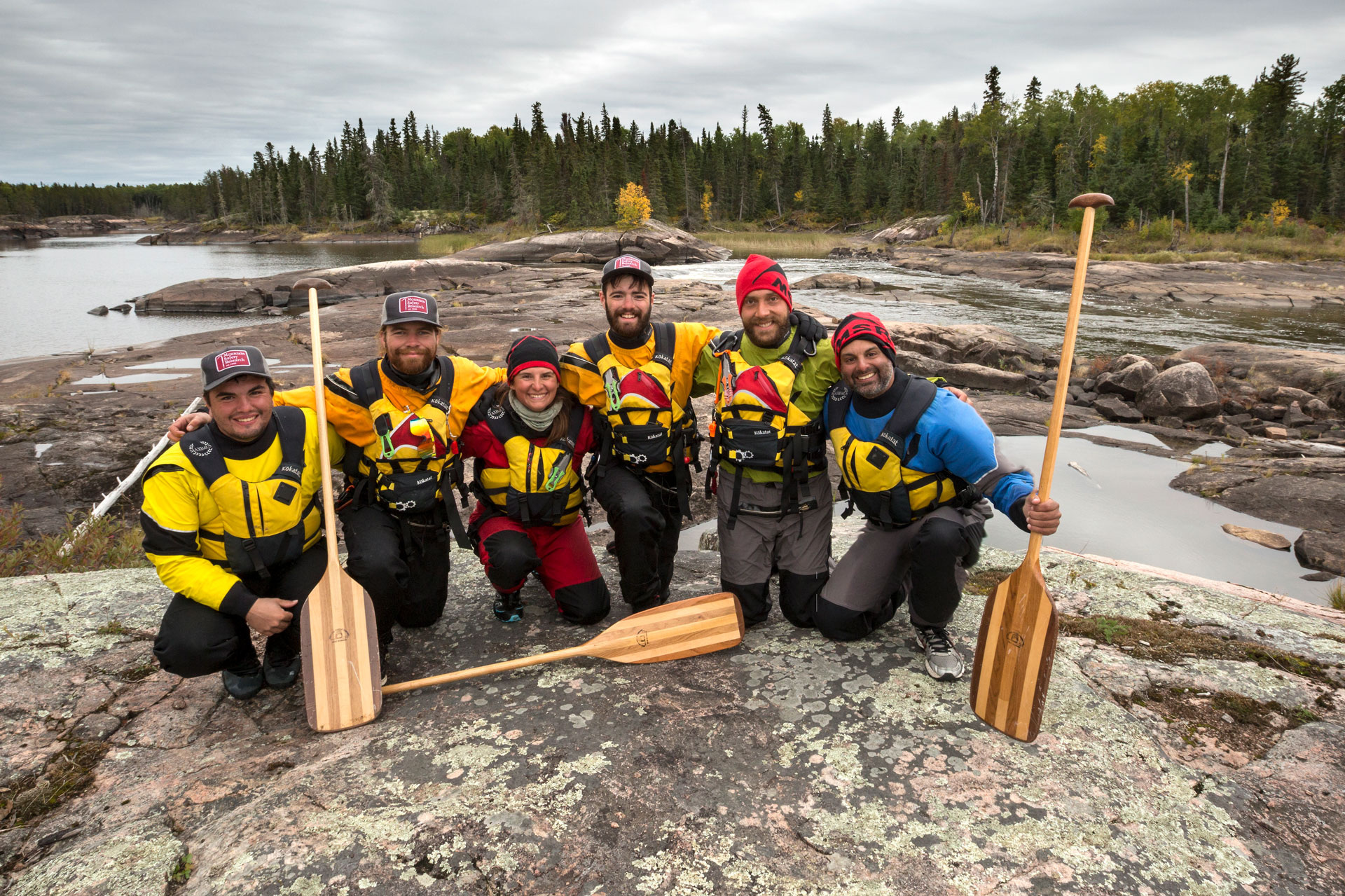Drifting to Connect: Paddling Canada’s Bloodvein River
Story and Images by Dustin Silvey
Outside my tent I hear the fire crackling. I open my eyes, shocked to realize the sun is shining. I roll my body to the side, slowly sitting up, and pull myself out of my sleeping bag. That’s when it hits me, the cold. I quickly put on some extra layers and head out of my tent to investigate the morning.
My friend Liam, with whom I have paddled a few rivers, is standing by the fire holding up what looks to be in my sleep-filled eyes, a deflated body. “Dry suit froze solid, trying to thaw it out.” His words bring me out of my drowsy haze and I remember that I am in central Manitoba, Canada, during late September, and a cold snap has hit the entire country.
This 12-day canoe trip down the Bloodvein River was supposed to be a typical hot, bug-ridden Manitoba paddling trip. This is a part of the world where you’re so busy swatting bugs that you miss the odd paddling stroke, which leads to shouting back and forth between stern and bow paddlers.
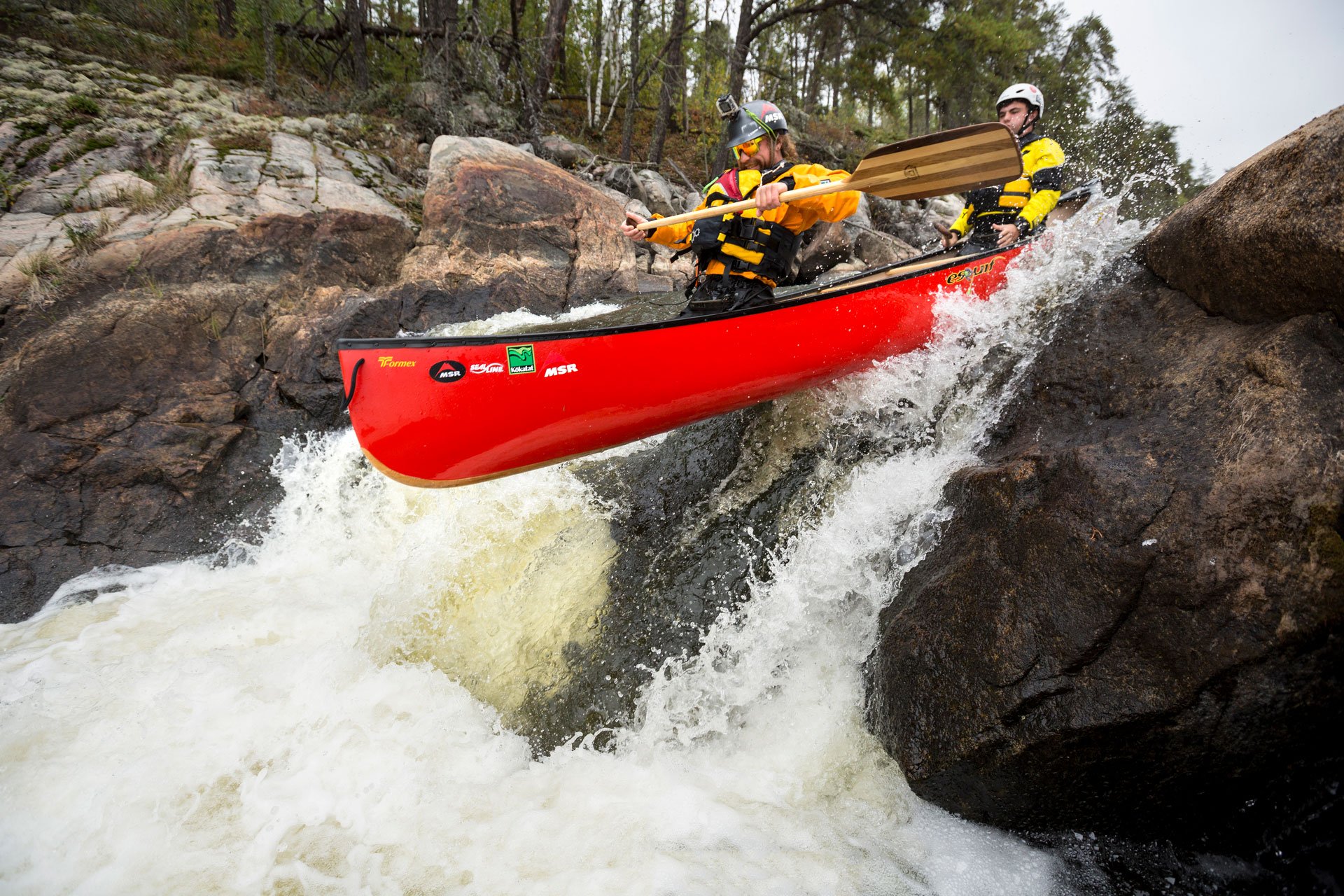
However, on this trip, our first day consisted of waiting out a storm so we could take a floatplane to the source of the river on the Ontario border. The storm never cleared and our first night in the wild Manitoba was spent in a bed and breakfast.
The next day, the warm Manitoba sun came out and lit our way to the start of our adventure. Our floatplane dropped us off at the source of the river with the sun beating down on our shoulders.
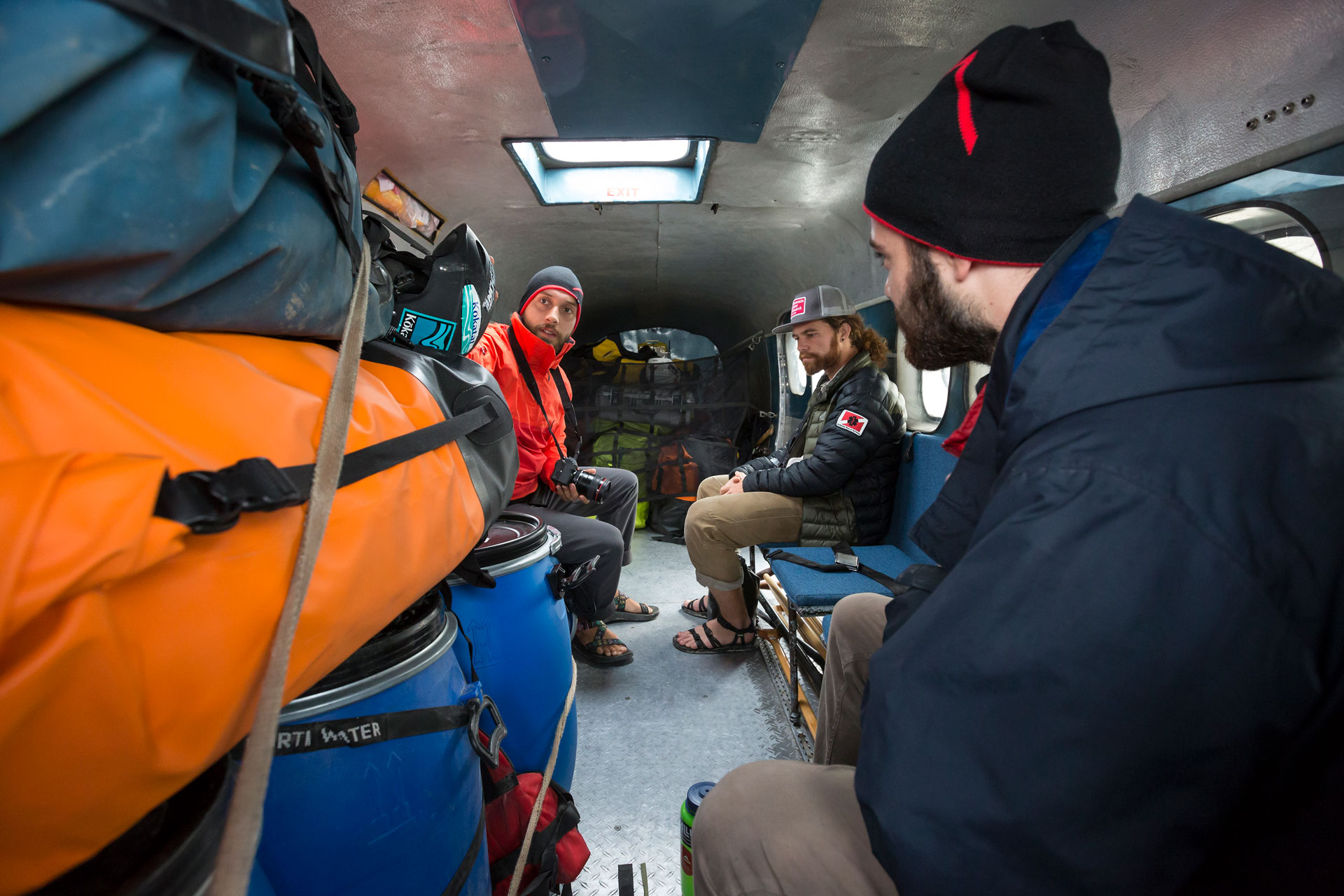
This was the Manitoba I knew, yet something was missing: the bugs. The colder September nights suppressed their relentless pestering paddlers. With the sun bright in my eyes, no bugs in my face, and a whole 220 km river in front of me, I thought this trip was going to be easy. Those are dangerous thoughts.
As the plane took off, excitement kicked in. Our band of six was about to paddle one of Canada’s most sought-out rivers. The Bloodvein River is a long stretch of class III/IV water with over 80 rapids and a deep history rooted in Indigenous culture.
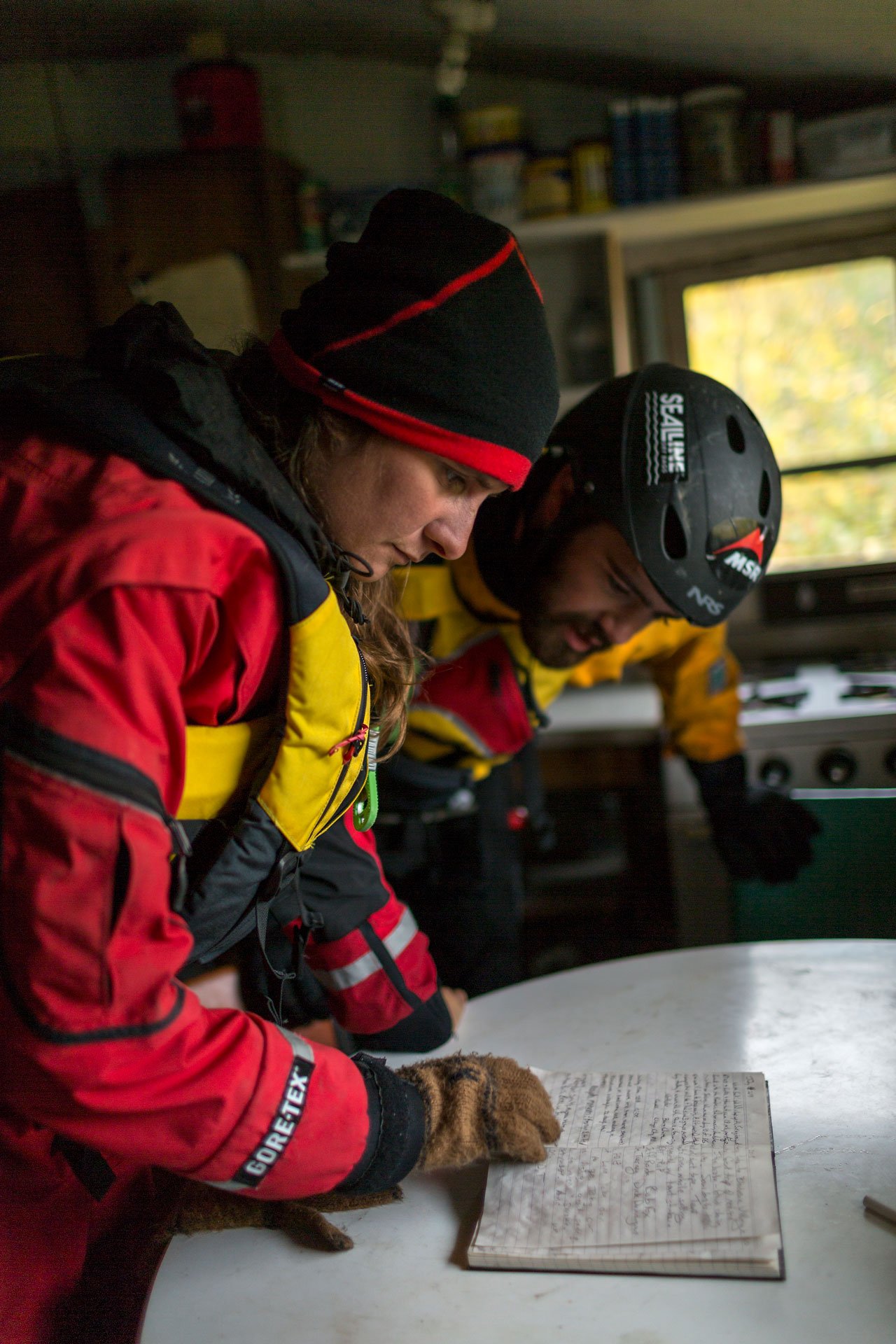
Named after a long blood-red vein of igneous rock that lines the canyon walls of the river, the Bloodvein River is an advanced whitewater pool-and-drop river. Our goal was to paddle the river from the Artery Lakes to Lake Winnipeg, after which we would spend some time in the Indigenous community of Bloodvein located at mouth of the river.
Day one arrived beautiful and sunny; no dry suits required. Every other day—dry suits required. The days weren’t cold, but going for a swim got worse and worse the farther down river we went. On day three I took a swim in the freezing cold rapids.
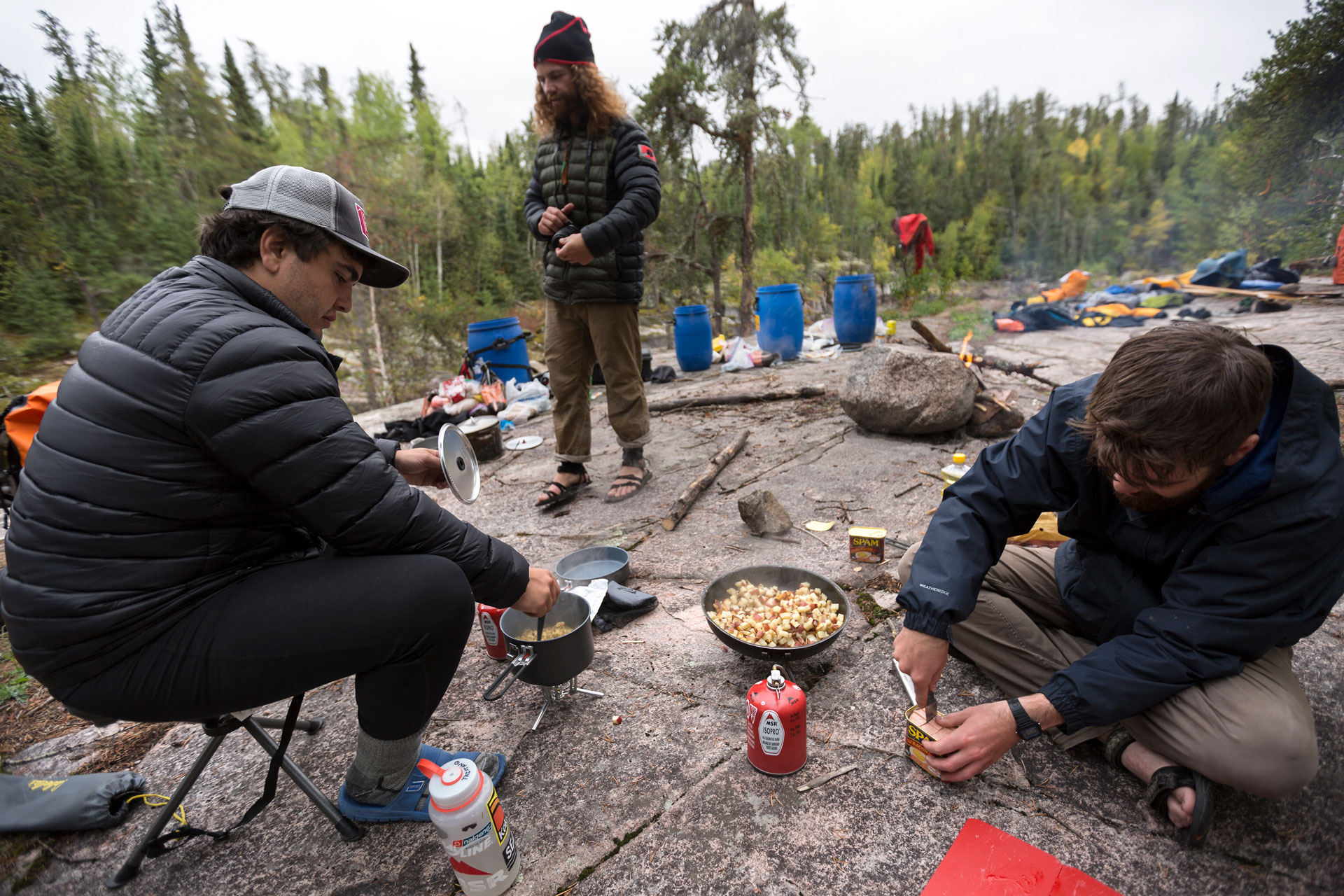
Our video journalist and I hit a rapid the wrong way and the canoe flipped and dumped our gear and us.
As I watched all my gear float passed me, I hoped that our dry bags would do their job and keep my clothes and tent dry and afloat. I swam over to my camera case, dragged it out of the water and waited in shame to be picked up by the next boat to run the rapid.
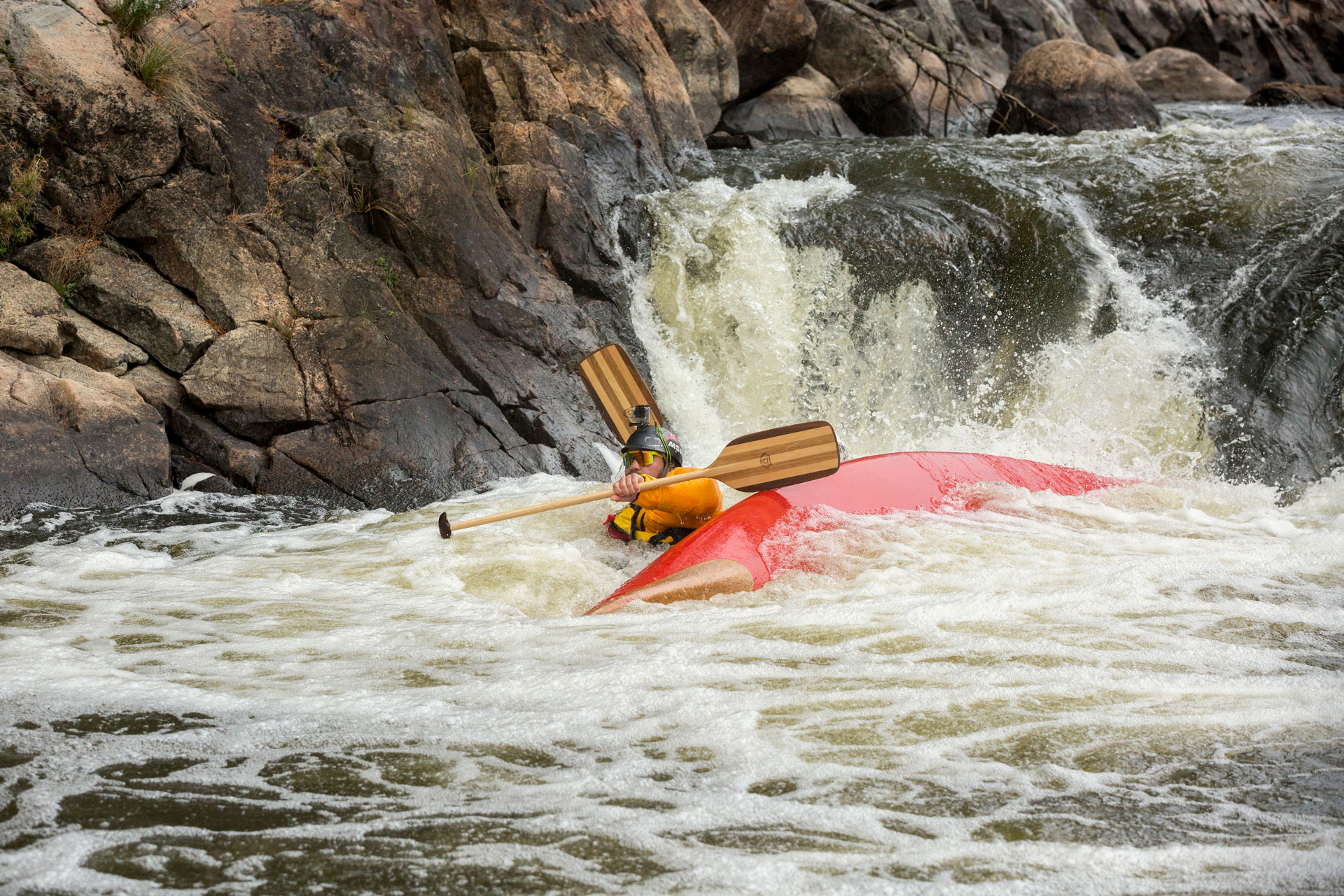
On the bright side, that night when I went to set up my tent and change my clothes, I found my gear dry as a desert. Nothing like dry socks on a cold night after a dump in the freezing river.
The nights started to really cool down around day five; by day 10 temperatures dropped below zero degrees Celsius.
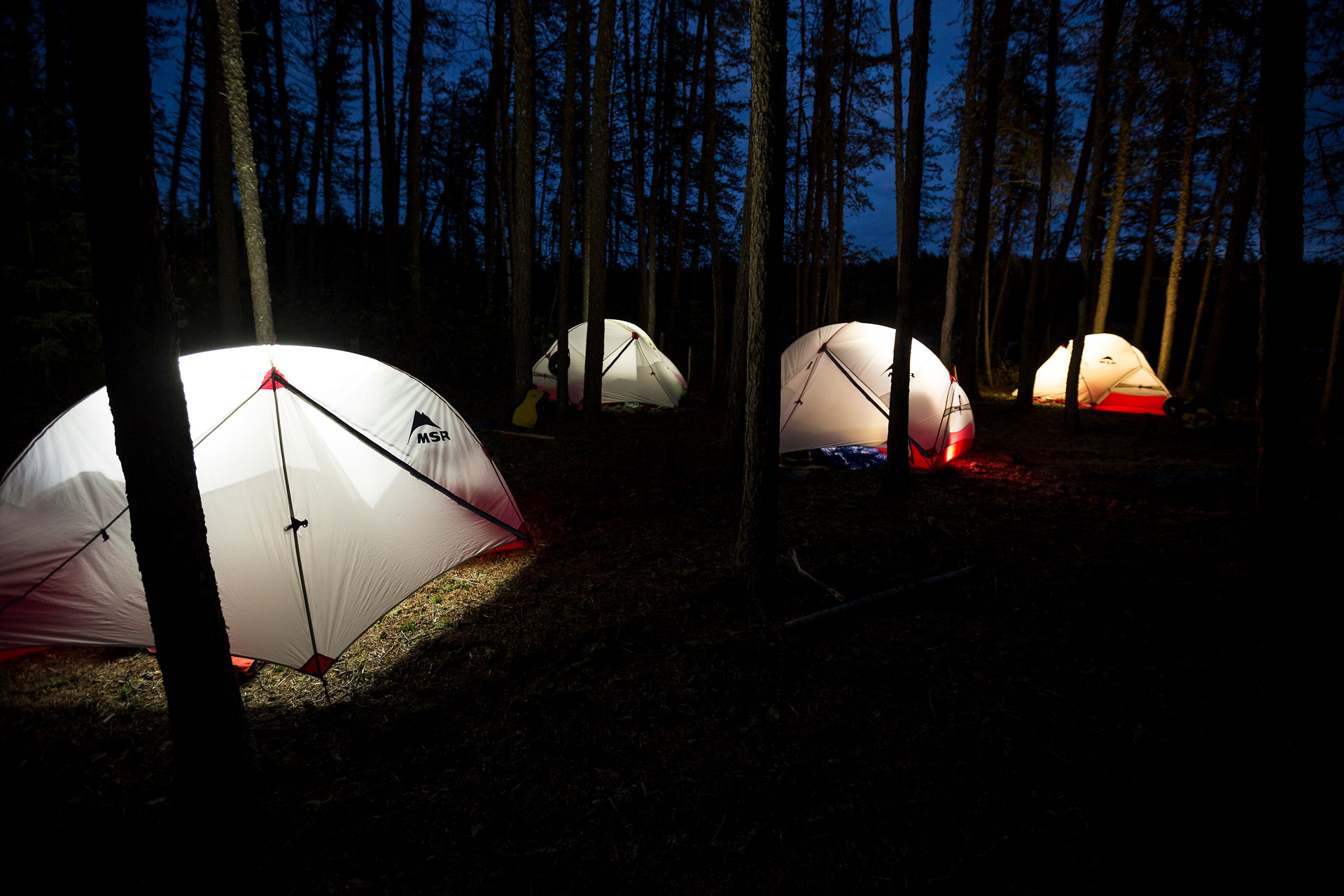
Instead of nightly swims, on this trip when we arrived at camp I would set up my tent, rip out of my dry suit, throw on all my warm clothes, blow up my mattress, and hide by the fire while the cooking team made dinner.
During this trip I had one of those existential debates all adventures ponder at some point: cold but bug-free, or hot but annoyed. Personally, I’d take the latter.
Our adventures continued with some waterfall running, some flooded boats, a few portages, tricky rapids, flipped boats, and of course, nice meals and bonding around the fire.
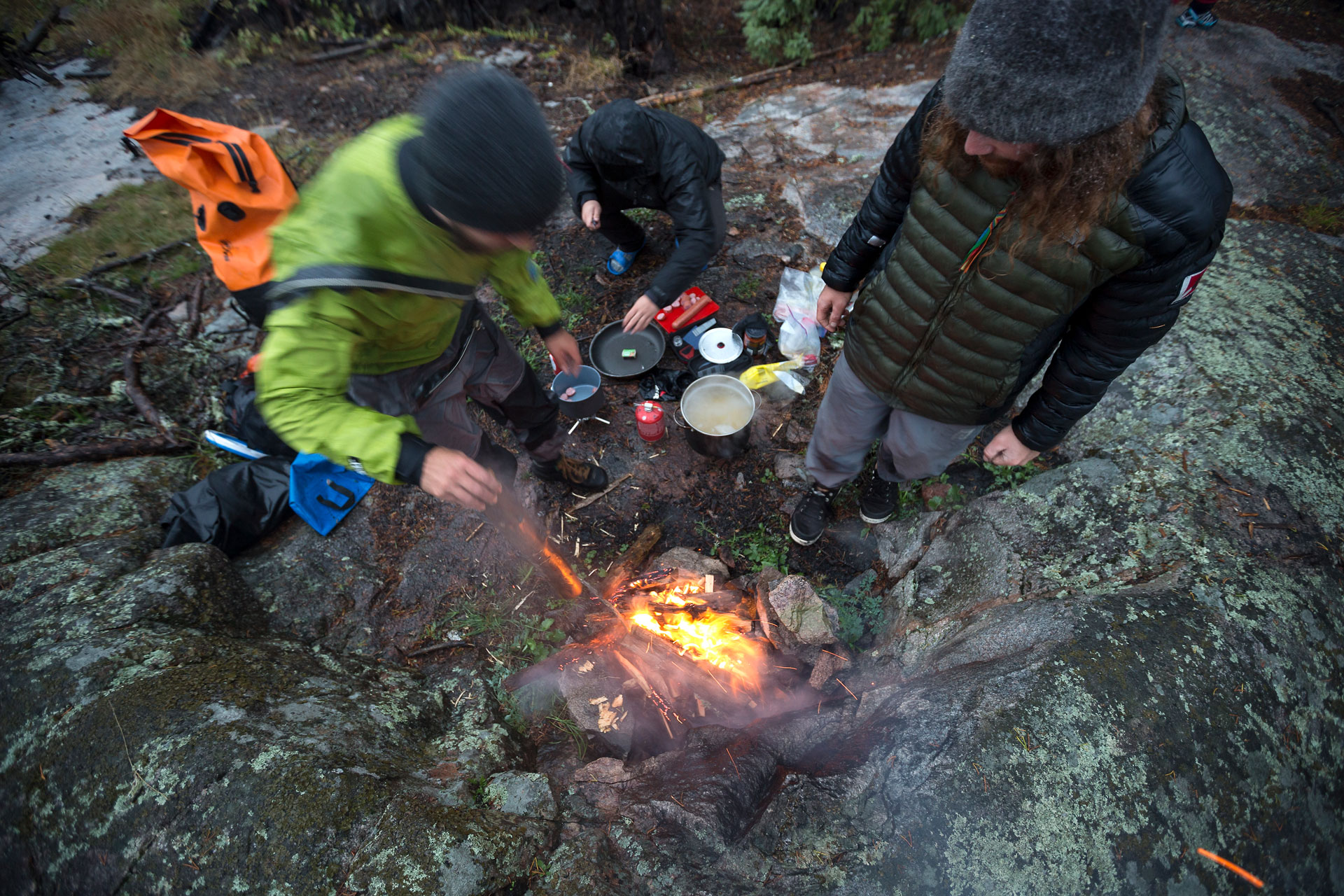
On these trips, you learn to rely on the people around you: sharing clothes, helping portage, cooking, etc; these actions of camaraderie lead to a bond between adventurers.
The kind of people that go on an unguided 12-day paddling trip know the importance of companionship. We also wanted to get to know the Indigenous community of Bloodvein, so we asked them to be a part of our adventure and family.
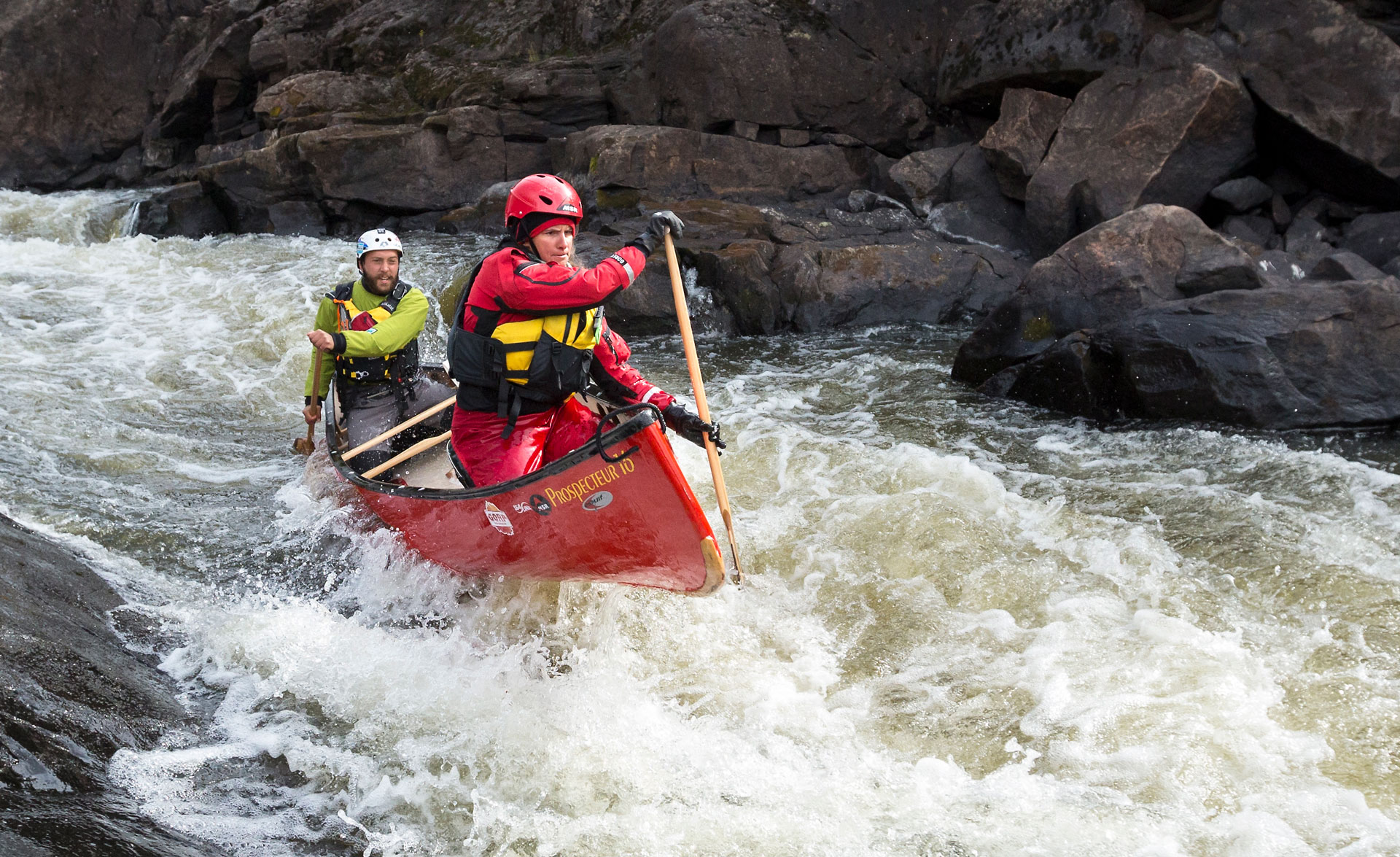
We made arrangements to stay with a physical education instructor, Sydney, in Bloodvein. We found him at the school. While some of us showered, Sydney and I spoke about his work and my PhD work in Indigenous communities. When he learned I was a wrestler, he asked if I would run a practice for the kids. In no time, we were giving a presentation about our trip, running a wrestling practice, and participating in an Indigenous Sweat Lodge ceremony.
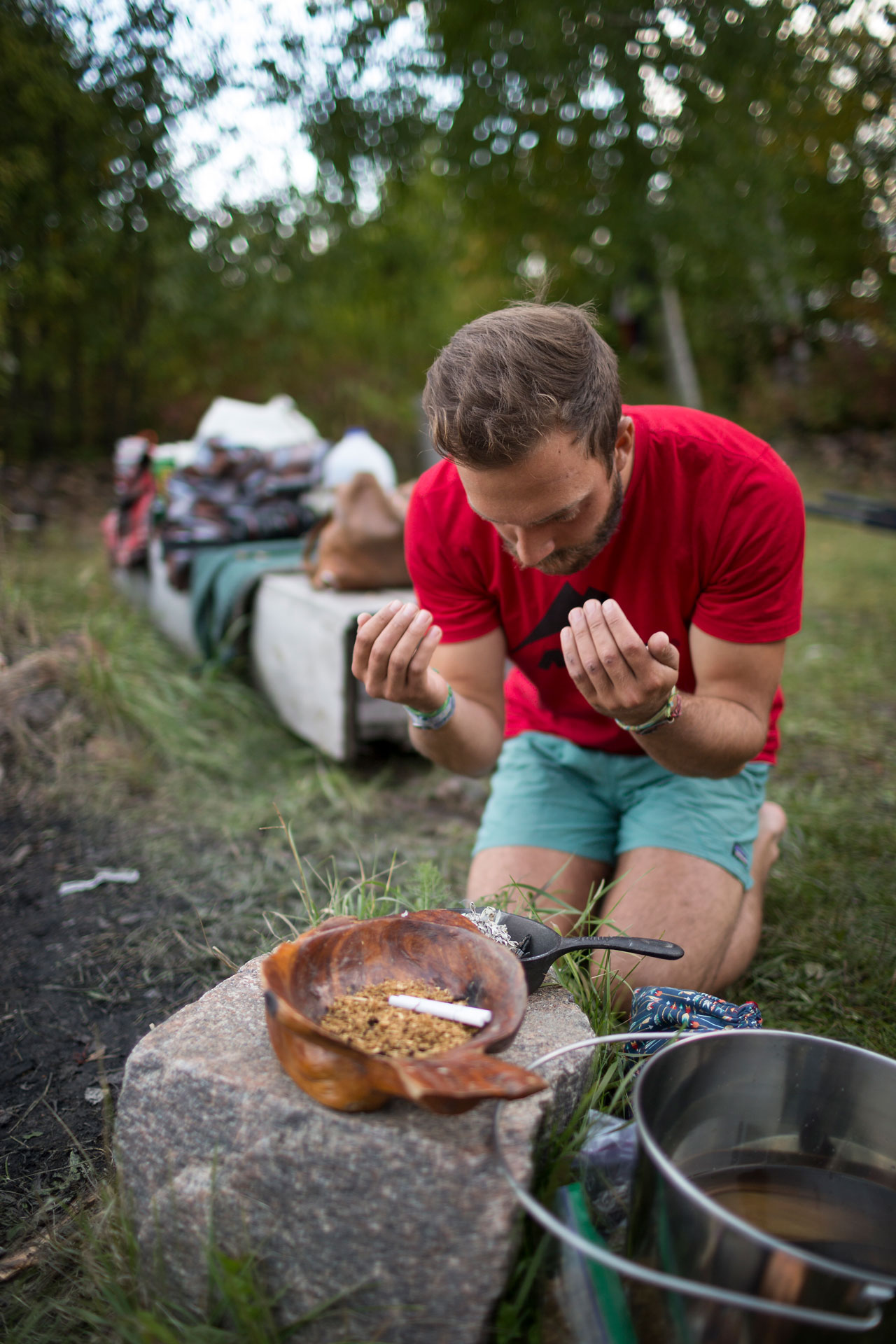
This is what we came to do: build a relationship between the paddlers, outfitters, and the Indigenous community. The whole two days in Bloodvein were an education in Canadian Indigenous culture. People all over the world come to Canada to paddle, but very few understand who has kept this land pristine for generations.
For me, it is the people and the culture of a place that make an experience different and educational. On this trip, we tried to truly understand the importance of respecting the people whose land through which we were drifting.
